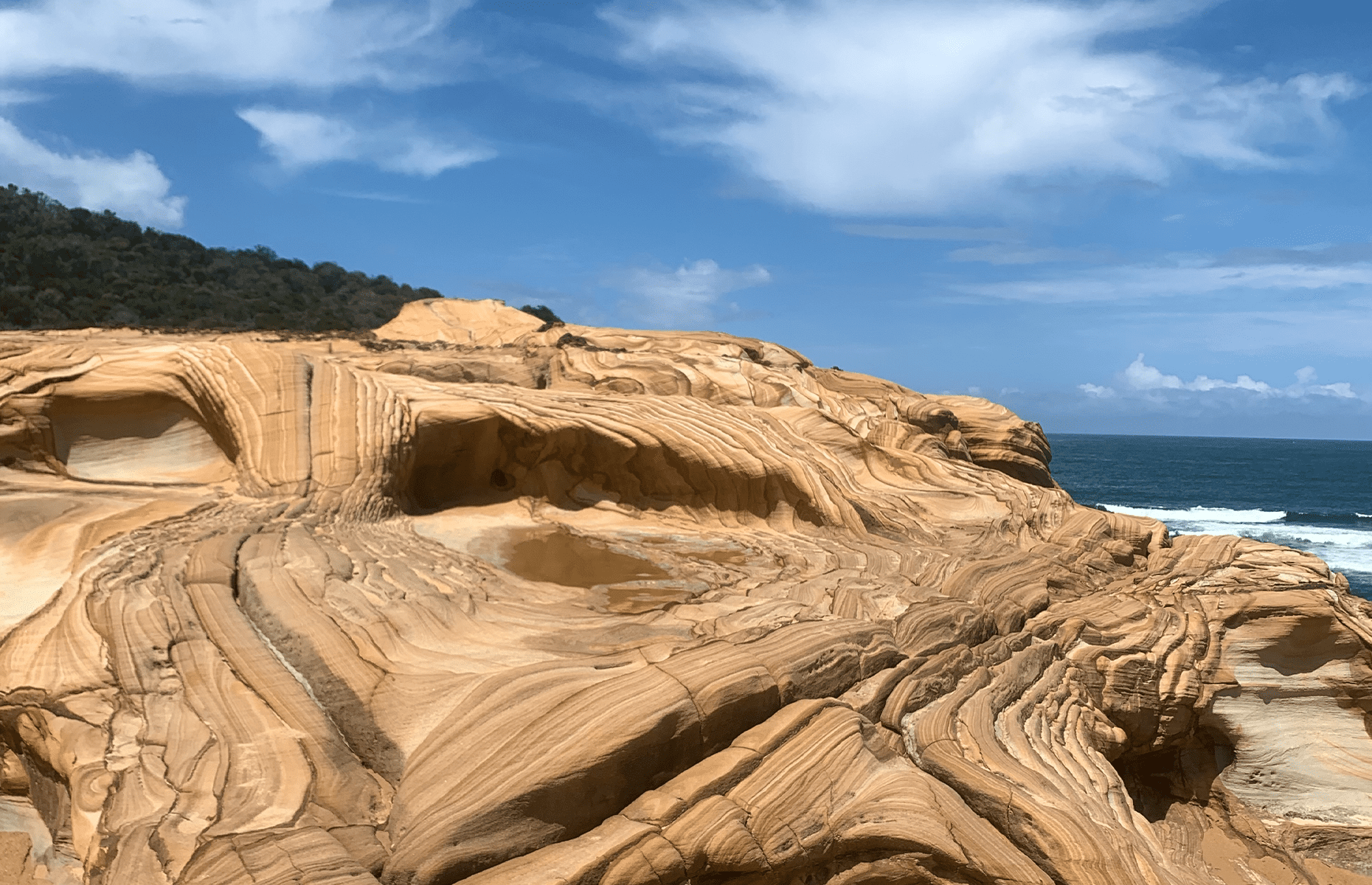Since I was a child, I’ve walked the coastal path between Putty and MacMasters Beach through Bouddi National Park, on the Central Coast of NSW. I was not a natural bushwalker, griping in the sticky heat of the summer mornings as we donned our sneakers and sunscreen and folded ourselves into the car for the short drive there from Avoca. Situated on Girra Girra land, Bouddi is the local Indigenous name for the area of and surrounding the National Park, most popularly translated as ‘heart’. And Bouddi is like a heart; blue-and-green-veined, breathtaking in its environmental diversity as one winds between cloistered beaches, shady rainforest, and low, shrubby heathland gripping the high, flat cliffs bordering the coast.
We always begin at Putty Beach, parking and walking along its squeaky white sand to a set of wooden stairs that lead up to the cliff-face boardwalk. This is arguably the highlight of the walking track; emerging from the bush and mounting the sheer, scarlet hill of the cliff, littered in powdery stone and starred with flannel-flowers. The ocean shudders into sight, vast and blue and rippling, like a bright ream of cloth. Salty wind assails your body, drifting bushwalkers’ hair and hats. Feet shuffle closer to the edge, nudged by adrenaline, to brush the column of empty air extending out and down, the dangerous glitter of wet rocks far below. If you squint and draw a frame around the view with your hands (as I often have) as to exclude the boardwalk railing, it’s easy to fall through slippery time and imagine the land prior to European invasion, which now swarms with tourists during the summer months.
The cliffs themselves are geologically complex and beautiful, honey-swirls of sandstone and rust-red laterite. A bizarre-looking ‘tessellated pavement’ formation runs beside one part of the boardwalk, wherein rock is eroded into a relatively flat surface of rectangular, tile-like panels.
Admittedly, my family and I never walk the full 8.5 km, always veering off to one of the beaches on the track and cooling ourselves in the water. Other times, we drive further to the Maitland Bay walking track; a steep tumble of root-threaded dirt and stone steps smoothed by shoe soles through the National Park, down to the flat, lapis beach. It hosts a rich number of mammals and reptiles that scuttle and crunch through the foliage and grass, including lace monitors, green tree snakes, microbats, and greater gliders. By the bay water, we slip into rock pools studded with gastropods and translucent white crabs. Whales and dolphins frequent this coast and can sometimes be seen from the boardwalk as white, foamy rips in the blue water.





